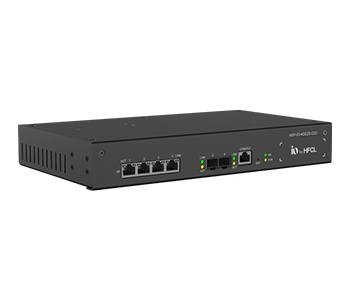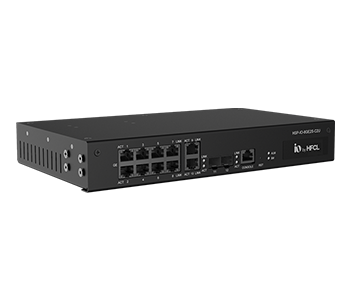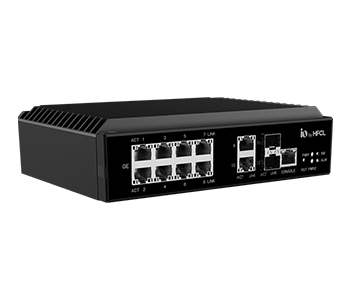Subscribe to Our Updates
Join our community and be the first to receive exclusive insights
You are subscribed now!
Products
Solutions
Resources
Software Platforms
WiFi





Learn how organizations achieve powerful, seamless performance
Yes, all variants support rack mounting. All these variants come with L clamps that can be used to attach switch on a standard 19-inch rack. 4 & 8-Port support wall mount also other than rack mount.
Yes, 4 & 8-Port Variants are based on fanless design. These switches have side and rear air vents that allow natural airflow and allow for passive cooling.
By default, switch comes with default Management IP 192.168.1.1, which can be used for first time login to switch via any of the access Ethernet ports.
ZTP (Zero Touch Provisioning) is a method by which HFCL switches can be configured with the required configuration without any user intervention. ZTP allows the switches to be installed directly into the environment after power on. There are 2 modes available that can be used in ZTP.
Auto Config in Boot Phase: In this mode, the switch look for DHCP server in boot phase. Once IP is assigned, switch then starts Ftp’ing the start-up configuration file from DHCP server using BootP and applies the configuration before coming to prompt.
Auto Config after Boot Phase: In this mode, the DHCP client starts only after the switch has booted successfully. The DHCP client looks for the DHCP server for IP assignment and then a startup configuration file can be pushed manually from central server for auto configuration.
Dynamic and static power allocation modes on port: There are two ways to allocate the power to PDs:
Dynamic:
Port power allocation is dynamic, based on class of powered device.
Static:
Port power allocation is static, based on maximum power configured.
PoE Port Priority:
Power over Ethernet port priority. Ports are grouped according to 'critical’, ‘high', and 'low' priorities. Ports at 'low' priority, which are delivering power, will be turned off to free power budget for 'critical' or 'high' priority non-delivering power port that is requesting power for start-up. Ports at 'high' priority, which are delivering power, will be turned off to free power budget for 'critical' priority non-delivering power port that is requesting power for start-up. Ports which are delivering power and at the same priority as non-delivering power port will not be turned off to free power budget. The lower priority ports, which are delivering power, will not be turned off if their power is insufficient to power-on the higher priority ports.
PoE Traffic Monitor:
PoE traffic monitoring functionality is to monitor the real-time network traffic by each PoE enabled port. Maximum traffic rate in Kbps that is expected on the PoE port that is powered on. When the rate is above the specified value, an alarm will be raised.
Perpetual PoE:
With perpetual PoE, The Switch can supply uninterrupted power to the connected devices even if the switch is undergoing reboot.
A PoE+ switch is best when you want to power devices like IP cameras, VoIP phones, and wireless access points directly over Ethernet. It reduces cabling costs, simplifies deployments, and ensures reliable device uptime.
An industrial Ethernet switch is built for factories, outdoor sites, transportation, and smart city deployments, where temperature extremes, dust, and vibrations can damage standard switches. Choose one if your network operates in harsh or mission-critical environments.